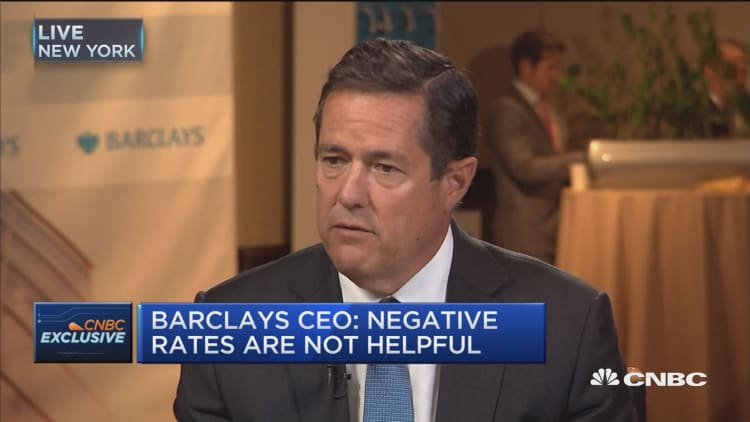Former Fed Chairman Ben Bernanke thinks policymakers should give serious thought to implementing negative rates.
The man who led the U.S. central bank immediately before Janet Yellen doesn't believe his former colleagues should rush to that kind of ultra-aggressive policy stance.
But of all the options the Fed has for stimulus, going to negative rates may not be as drastic as it seems, Bernanke said in a blog post this week.
"It would be extremely helpful if central banks could count on other policymakers, particularly fiscal policymakers, to take on some of the burden of stabilizing the economy during the next recession," Bernanke said, writing in his position as a consultant to the Brookings Institution think tank.

"Since that can't be assured, and since the current low-interest-rate environment may persist, there are good reasons for the Fed and other central bankers to consider changes in their policy frameworks," he added. "The option of raising the inflation target should be part of that discussion. But ... it is premature to rule out alternative or potentially complementary approaches, including the possibility of using negative interest rates."
Negative rates essentially involve charging depositors to keep money in the banking system, or, as in the case of the fixed income markets, charging buyers of government bonds to lend money.
Central bankers in Europe and Japan have instituted negative rates as another means to stimulate their respective economies. More than $11 trillion in global sovereign debt currently carries negative yields.
The results have been mixed at best, with inflation levels remaining muted and economic growth sluggish.
However, Fed officials at least have discussed the idea, thoughYellen herself has said there are no plans to implement the policy anytime soon. The Fed kept its target rate near zero for more than seven years in the wake of the financial crisis. The most notable effect of zero rates was a boom in the stock market but a recovery otherwise that was the worst since the Great Depression.
Discussion of negative rates has come in the context of what the Fed could do should another economic crisis arise. With the current funds rate target at just 0.25 percent-0.5 percent, it leaves the central bank with little wiggle room using conventional tools.
More recently, some Fed officials — most notably John Williams, the head of the San Francisco branch — have entertained the idea of raising the inflation target above the current 2 percent level. In theory, that would give the Fed more leeway before having to raise rates and effectively lower the real interest rate, or the level of nominal rates compared to inflation.
Bernanke said there are problems with that approach that do not occur with using negative rates.
"Negative interest rates are easy to implement," he wrote. "In contrast, while the Fed could announce at any time that it is raising its inflation target, the announcement would not increase the Fed's ability to lower the real interest rate unless the public's inflation expectations changed accordingly."
Bernanke said political issues also would dog the Fed in trying to raise the inflation rate.
Washington lawmakers, particularly Republicans, have been critical of the Fed's dual mandate — price stability and full employment — and want the central bank to focus solely on controlling inflation. The Fed might have an easier time politically with instituting negative rates.
"In the political sphere, the fact that negative rates would be temporary and deployed only during severely adverse economic conditions would be an advantage," he said. "Like quantitative easing, which was also unpopular in many quarters, a period of negative rates would probably be tolerated by politicians if properly motivated and explained."
The full text of Bernanke's post is here.


